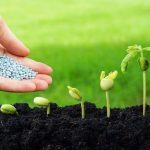By Eddah Waithaka
Dr. Takemore Chagomoka lifts a jar filled with wriggling black soldier fly larvae. To the untrained eye, it may look like nothing more than insects. To him, and to thousands of farmers across Kenya, it represents the future of science research that doesn’t end with a published paper, but begins there.
“A lot of research ends up in reports that just sit on shelves,” says Dr. Chagomoka, who leads the Innovation, Scaling, and Business Acceleration Unit at the International Centre of Insect Physiology and Ecology (icipe).
His message to colleagues at a recent seminar was blunt: the old way of doing science is failing the people who need it most.
The solution, he argues, is a fundamental shift in mindset. Research must be designed for impact from day one. “What problem are we solving? How is this going to change people’s livelihoods?” he asks.
For decades, research has followed a familiar path: a scientist makes a discovery, publishes a paper, and hopes someone else will find a way to apply it. But for today’s challenges, that linear model is no longer enough.
Dr. Chagomoka calls for a more dynamic process, one that links discovery, outreach, dissemination, and scaling into a single living continuum.
It’s an approach that demands scientists break out of their silos and work across disciplines, because the problems farmers face are never one-dimensional.
“Think of a smallholder farmer in Kakamega,” he explains. “They’re raising goats, chickens, maize, and vegetables all on the same plot. They need knowledge from both plant and animal science at once. That’s the level of complexity we must design for.”
The black soldier fly project shows what this looks like in practice. Faced with the rising cost and environmental toll of soybean and fishmeal, icipe researchers developed an alternative: insect protein. But the breakthrough wasn’t only in the lab.
Farmers were engaged early through outreach, the benefits were shared clearly through tailored communication, and partnerships with feed companies ensured the innovation could scale.
Today, insect protein makes up 6 to 8 percent of animal feed in Kenya, a measurable shift that is cutting costs and changing how livestock farmers operate. “That’s impact,” says Dr. Chagomoka. “When research findings change the way people actually live and work.”
Central to this approach is the way knowledge is communicated. A dense academic paper still has its place, but it is not enough to reach those who need it most.
Scientists are now tailoring their messages with precision writing sharp policy briefs for decision-makers, publishing in journals for peers, and using radio, WhatsApp groups, how-to videos, and farmer field schools to speak directly to communities. The principle is simple: the right message, delivered in the right format, to the right people.
For Africa, the stakes could not be higher. With populations growing and cities expanding, Dr. Chagomoka sees two priorities rising above the rest: food security and climate change.
His passion lies in urban and peri-urban agriculture, from vegetables grown on balconies to small-scale livestock production, helping city dwellers secure nutrition even in the face of poverty.
But this must be coupled with climate-smart systems designed to withstand erratic rainfall and rising temperatures. In his vision, the continuum connects everything from research on drought-tolerant crops to policies that make urban farming viable.
The jar of larvae in his hand is more than a scientific experiment. It is a symbol of a new relationship between science and society, where the true value of research is measured not by the complexity of the data, but by the depth of its reach. In this future, the goal of science is not simply to publish, it is to change lives.





